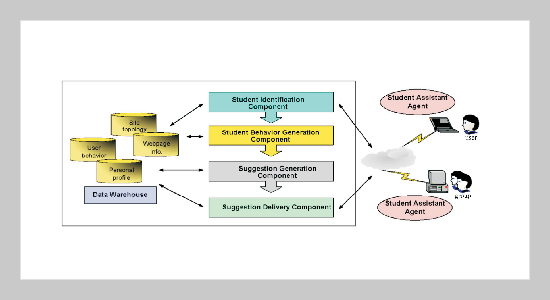Che-Yu Yang 1, Hun-Hui Hsu2 and Jason C. Hung3 1Department of Computer Science and Information Engineering, Tamkang University, Tamsui, Taiwan 251, R.O.C.
2Department of French, Tamkang University, Tamsui, Taiwan 251, R.O.C.
3Department of Information Management, Northern Taiwan Institute of Science and Technology, Taipei, Taiwan 112, R.O.C.
Received:
July 20, 2005
Accepted:
November 2, 2005
Publication Date:
September 1, 2006
Download Citation:
||https://doi.org/10.6180/jase.2006.9.3.07
Nowadays the information technology is developing quickly, the information technology changes with each passing day. The accessibility of the World Wide Web and the ease of use of the tools to browse the resources on the web have made this technology extremely popular and the method of choice for distance learning. There are many studies have been done regarding distance learning, many studies focus more on system instruction and in curriculum organization. These do not help the E-learner to study according to his or her interest. Nevertheless, the goal of this research is somewhat different from other works. This research tries to make the extension of the lecture teaching. The instructor prepares the course content related information as supplementary reading or knowledge, and composes them into the format of web pages, and the online students can browse the web content. Then, according to students’ navigation activities and the properties of the web content, our system can suggest the web content might interest them but has not been read to them. Our Web Content Suggestion System for Distance Learning makes suggestions to students in two ways: (1) collaborative filtering - matches one’s tastes or needs to those of the other students who share his likes and dislikes and suggests web content that they have read and liked but he hasn’t read; (2) content-based filtering - suggests web pages similar to those one prefer based on a comparison of web content. The web content suggestion can enlarge student’s learning space and widespread their interests that lecture teaching hardly offers. Through this system, we can further dig out or induce students’ interests, thus widen their knowledge scopeABSTRACT
Keywords:
Distance Learning, Collaborative Filtering, Content Based Filtering, Web Mining
REFERENCES
















